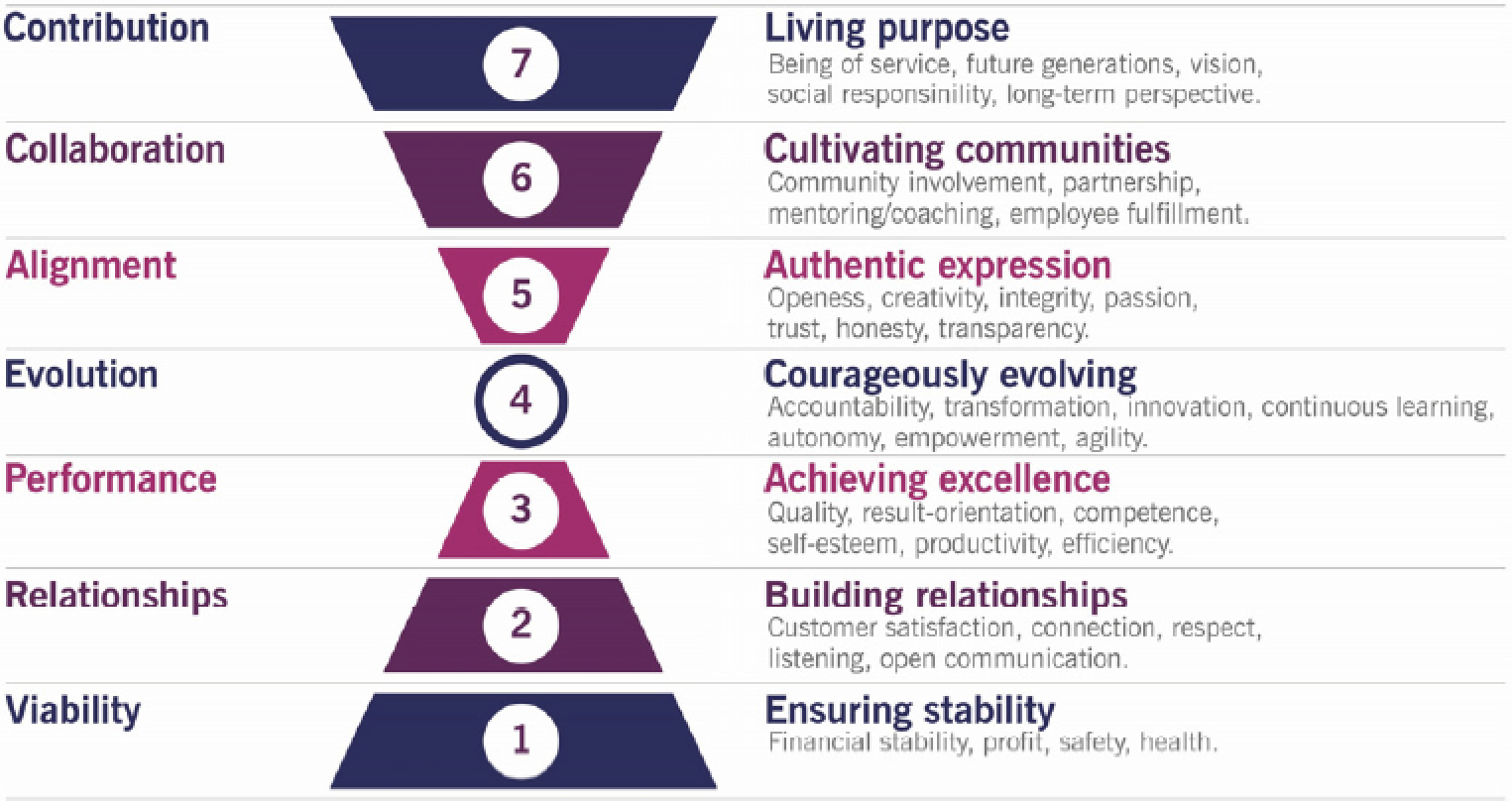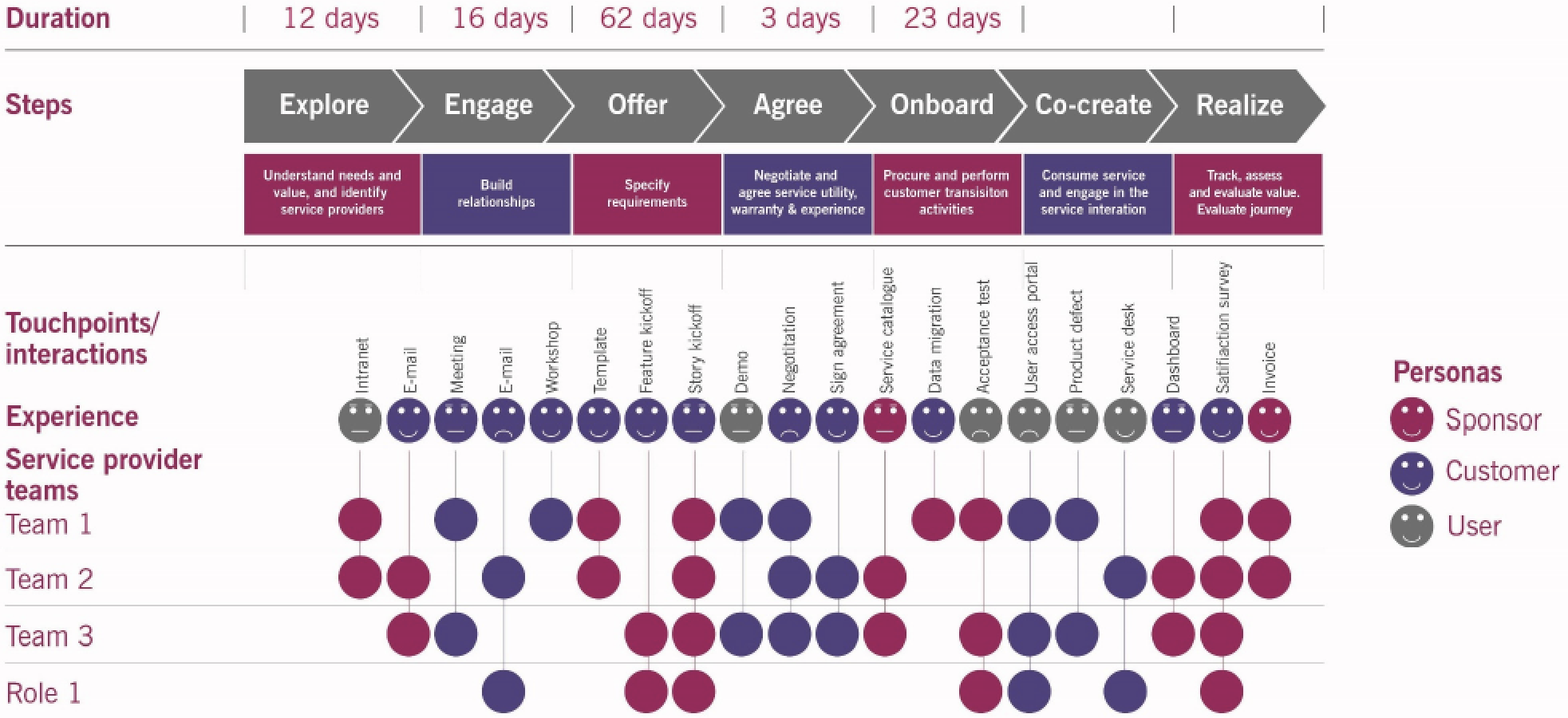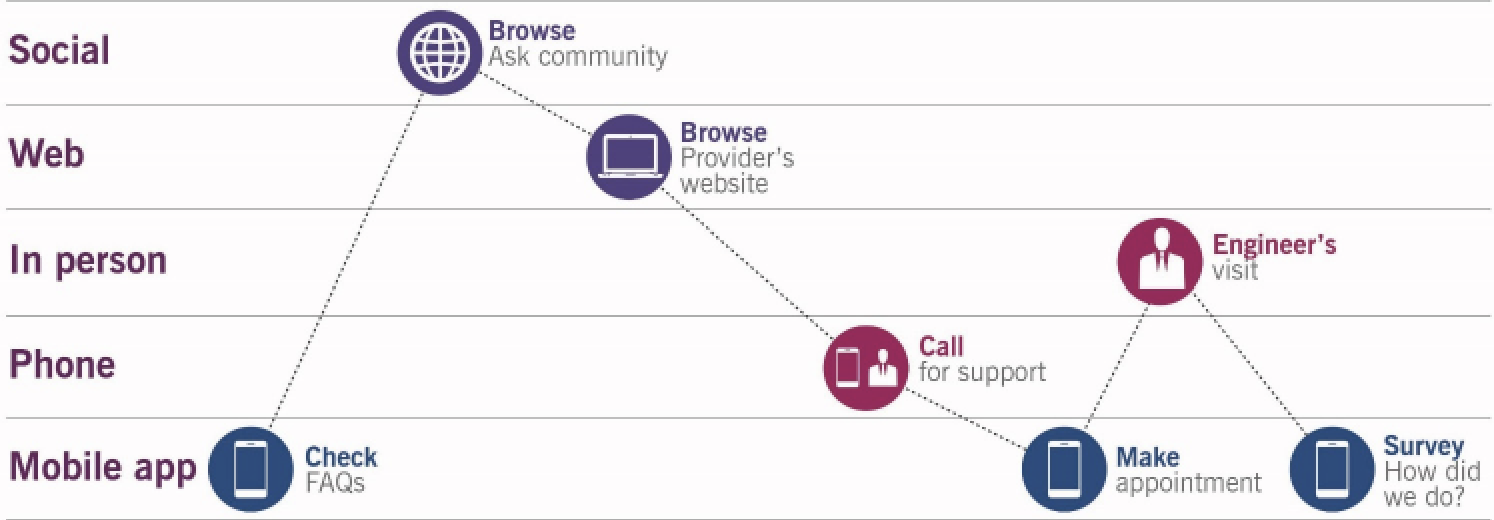ITIL 4 Strategic Leader Certification Course: Customer/Market Relevance
To begin this course, go to the main page ITIL 4 Strategic Leader Certification Course.
4. Customer/market relevance
- 4.1 Approaches to achieve operational excellence
- 4.2 Financial aspects of DITS
- 4.3 Strategic approaches for digital organizations
1. Strategic approaches for digital organizations
The strategy of a digital organization reflects values and business model
Using the Barrett model, the approach depends on what the organization values

2. Achieve customer/market relevance
Based on the strategy chosen, organizations must decide on an approach to achieve customer/market relevance (ensure balance)
Customer relevance: ability to continually meet and exceed customer expectations, and changes to the customer and their context:
- Customer needs change over time; organization must understand value from customer view
- 4 Ps: product (service), price, promotion, place
- 4 Cs: consumer needs, cost rather than price, communication rather than promotion, convenience rather than place
Complexity in understanding customer relevance comes from the various provider types (government, non-profit, commercial) and their various consumer groups, partners, customers, all have a different perspective of value
Market relevance: ability to continue to operate within a market that is characterized by a particular use of digital technology, and how that technology and its use changes
To be successful, organization must understand that needs change over time as will the use of the organization’s product and services (must be flexible and agile to continue to provide relevance)
Approaches:
- Customer journeys
- Omni-channel delivery and support
- Context-sensitive delivery and support
- Customer analytics
- Customer feedback and 360° approaches
3. Customer journey
Customer journey: the complete end-to-end experience that service customers have with one or more service providers and/or their products through touchpoints and service interactions
Why does a customer engage with a provider ?
- Beyond the service or product
- What is the customer trying to achieve
- How are the products/services used by the customer ?
Knowing these answers, an organization can provide a more focused solution, meeting the needs of the customer: design thinking (ensures a customer-focused approach, solve a problem by empathizing with the person who has the problem)
Customer journey map:

4. Omnichannel delivery and support
Objective: to ensure continual customer engagement across multiple communication and delivery channels, both online and offline, to deliver consistent and positive customer experiences
For effective omnichannel experience:
- Digital customer experience: focus on customer interactions to ensure positive experience; develop appropriate interaction mediums
- Digital operational experience: focus on the ecosystem required to deliver customer experience; manage and integrate internal, partner, and third party services for seamless operations
Types of channels:
- Direct: customer engage directly with service provider
- Indirect: customer engage with a third party (e.g. broker or reseller)
Omnichannel delivery and support:

5. Context-sensitive delivery and support
An organization tailors its approach to the customer:
- Understands customer and desired outcomes
- Encourages customer engagement
Must:
- Evaluate interactions: use omnichannel to get a broad spectrum of information on the customer and understand pattern of interactions
- Build feedback mechanisms: develop feedback loops (data) in products and services so data is real time allow effective responses
- Develop analytic capabilities: develop analytic skills for a more data-driven decision to improve the overall experience
6. Customer analytics
Collect, analyze, and understand customer data to drive strategic decision-making:
- How and why customers have engaged
- Demand for new/future products and services
- Shows gap in portfolio and performance
Correlate with environmental factors: determines economic indicators and predicts shifts in purchasing behavior
7. Customer 360 and feedback
| Customer 360 | Customer feedback |
Uses data virtualization and analysis:
Enables organizations to design products and services to meet a broader range of services (lessens the chance the customer will use a competitor) |
Obtaining real-time feedback and evaluation is critical to maintaining customer relevance. New/changed products/services are based on this information (understanding customer needs) Customer satisfaction and net promoter scores indicate where organization strategy is strong and the gaps that need to be addressed: validate with F2F interaction to understand perception, goals, perspectives, needs |
Go back to ITIL 4 Strategic Leader Certification Course for the other chapters if you completed this Customer/Market Relevance chapter.
Interesting Management
-

Part 1: A good manager, better team motivation, better team productivity, better team results
When you are managing a team, “how to be a good manager” is the “must”...
-

Report optimization, increase your time management
As manager, I am doing many reports, even when I was an ITIL consultant, I still needed to do many reports...
-

Tools to get your ITIL intermediate certifications, the missing 15 points for the ITIL 4 Managing Professional
ITIL V3 is going to be obsolete...
-

The importance of the first customer meeting for the service
Managing an IT service when I start a new company is not an easy task, particularly true, if the service...



